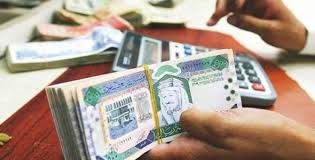
A recent study revealed that the prices of imported goods in the Saudi market does not respond to the change in the exchange rate of the riyal, despite currencies decline the most important trading partners of the Kingdom in front of the Saudi riyal by about 4.8%, according to the newspaper "City" on Monday (March 7 / March 2016).
Saudi Arabia The study attributed this to several major factors have contributed to the survival of high prices of imported goods, warning that the survival of these factors with high assigning some goods due to lower support for energy in the coming period will lead to inflationary pressures will be affected by the consumer.
And carried Arabia study, which prepared by researchers at the Saudi Arabian Monetary Agency "SAMA" agents system which leads to a monopoly and take advantage of the absence of a competitor alternatives to commodity monopolies in addition to the weakness of competition in the local market a responsibility not a reflection of the decline in world prices on the Saudi consumer in imported goods such as cars, clothing and materials food.
Saudi Arabia said the study: «Some monopolists of agents of imported goods are pricing without taking into account the rise in the local currency exchange rate against the currencies of countries importing them.
And adopted a Saudi study on the riyal exchange rates trading partners currencies of the kingdom during the years 2014 and 2015, which took into account the need by traders to adjust prices within a reasonable period taking into account the available inventory levels and periods of supply the usual contractual obligations governing international trade, the degree of domestic prices in response to changes in price exchange is weak, which may indicate a need to consider the level of competition in the local market and its impact on prices.
Saudi Arabia The study noted that the sample of imported goods prices in the domestic market does not respond to the change in the riyal's exchange rate against the currencies of countries that are importing as a result of the existence of quasi-monopoly in the Saudi market enhances the strength to rely on exclusive agents for a number of commodities in the local market, where there is a The local agent for a lot of imported goods, which gives the agent an opportunity to avoid a price adjustment according to the exchange rate movements required speed, especially when the high value of the riyal.
And warned Saudi Arabia study that the coming period will see inflationary pressures due to raising some fees and reduce fuel subsidies, which will be exploited by some monopolists as the changes in the prices of large exchange as a result of the increasing value of the dollar and therefore the riyal after the decision of the Federal Reserve to raise US interest rates, which It expected to see coming heights during 2016 while the domestic prices in response to these slow changes, which could lead to cumulative imbalances in the balance of payments as a result of exports in response to changes in exchange rates and lack of imports of these changes in response.
He recommended researchers institution of criticism in Saudi Arabia, the study need to take care and enough select transition effects of exchange rates to domestic price indices and trying to control these channels channels, as well as the legalization of agency system and promote competition and concerted efforts to reduce the monopoly be found, including the facilitation measures and price controls, and provide a database economic, financial and sophisticated information systems in order to strengthen the management of economic activities and the provision of information and data on prices.
According to the study, Saudi Arabia rising purchasing power of the average, Raal- against other currencies used in the comparison during the study period as a result of riyal's peg to the US dollar and the strength of the dollar against the same currencies.
China's yuan has traded lower against the riyal by 3.9 percent during the period (January 2014 -December 2015 m), the Japanese yen continued to decline against the riyal, which fell by 15.6 percent during the same period. The same is true on the Indian rupee, which continued to fall against the riyal hit rate of decline in the rupiah exchange rate against the riyal 6.2 percent during the same period.
|
